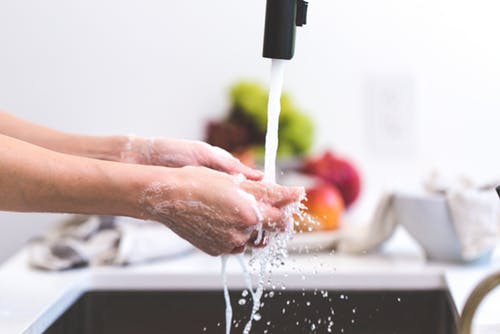
When your children are little, you are in complete control of a lot of the things that they touch. Your baby is crawling around your home so you clean the surfaces your baby touches. You probably have a wide array of baby safe cleaning products. The same is true when you go out into public with your baby or toddler. You can sanitize the surface they will be eating at and you can wipe the shopping cart or high chair clean as well.
When it comes to sanitizing surfaces, you have a few options. You can instantly reach for the wipes that grocery stores and big box stores provide near the shopping carts. Have you ever questioned the actual germ fighting and eliminating abilities of those wipes? How sanitary are those wipes if everyone is touching the same container? You might also have some name brand travel wipes in your purse or diaper bag and simply rely on your own supply. Some parents even purchase Caviwipes because they’ve seen them in their pediatrician’s office and know that the quality is superb.
We cannot completely limit their exposure to germs. This is something we should not strive to do at all. The best way to build up someone’s immunity is to fight off a cold and build up a resistance. This doesn’t mean we want to go around licking public surfaces to catch every bug going around, this just means we can’t live in a bubble. The necessary precautions such as cleaning wipes, hand sanitizer, and avoiding overcrowded public places during the height of cold and flu season are the easiest ways to reduce exposure. What about school aged kids though? We are sending our kids to school every day during the height of these germy times and crossing our fingers in hopes that they don’t catch every bug going around the school. Is there a way to reduce their exposure as well and what are the schools doing to help reduce the spread of germs?
When you send your child to school, you are entrusting them in someone else’s care. You hope that the administration and staff are doing everything necessary to provide that educational, safe, and clean learning environment. Custodians and cleaning crews are required to take courses regarding proper cleaning practices within schools. Even when all of these measures are taken, there can still be times of cold and flu epidemic. It is important for parents to keep their children home if they are exhibiting the signs of a fever or viral infection. No one is perfect and sometimes you will send your child to school because they seem completely happy and healthy in the morning. By lunchtime, the school nurse is calling because your child now has a stomach bug or sudden fever. There are things that you can do to prevent the spread of the germs to other classmates and people within your house.
- Call the doctor and bring your child in if they deem it necessary
- Sanitize all common surfaces in your home such as door handles, phones, bathrooms, and other common space
- Wash your child’s backpack and lunch bag
- Keep your child in their room so the germs are isolated
To limit germs at school, you should attach a hand sanitizer to your child’s backpack, and you can enclose single-use cleaning wipes in their lunch bag. This way, you have some peace of mind knowing your child was able to properly clean their hands before eating and during the day. Children touch a lot of common surfaces during the day such as railings on stairs, books in the school library, keyboards in a media center, shared art supplies in the art room and playground equipment. Students do have opportunities to properly wash hands throughout the school day, but a little antibacterial at the desk can help limit the germs. Parents can also reach out to school during times of heightened cold and flu outbreaks and inquire about methods used for prevention. Some schools completely discourage the sharing of school supplies and increase the amount of hand washing breaks. Knowing your school’s procedures may help reduce any worries you have about the cleanliness of your child’s learning environment.




